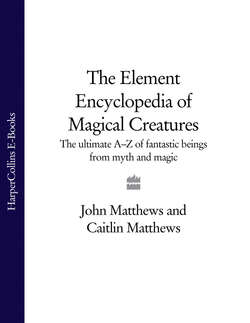Читать книгу The Element Encyclopedia of Magical Creatures: The Ultimate A–Z of Fantastic Beings from Myth and Magic - John Matthews - Страница 121
APIS
ОглавлениеThe bull god of Ancient Egyptian mythology. Apis is sometimes called the Son of Ptah and he acts as an intermediary between mankind and the creator god of Memphis. Oracles are also received through his priests. The sacred bull is black with a small white diamond patch on its forehead; between its horns it carries the emblem of the Sun Disc and the Uraeus, though at other times these may be replaced by the Moon. On its back it has the protective wings of a vulture, and the hairs of its tail are divided into two strands, representing the original two kingdoms of ancient Egypt. According to the Greek writer Herodotus, the scarab beetle, sacred to the creator god, was to be found under the tongue of Apis.
Real bulls were culled from a special herd and treated as sacred. In Memphis, these bulls lived in palatial quarters close to the temple of Ptah, where there were also many statues of the bull god, represented as human in shape with a bull’s head. The pharaohs of Egypt were identified closely with Apis and bull imagery, with its inherent notion of strength and fertility, was a characteristic of the stories of the god-king who was often known by epithets such as ‘Victorious Bull’.
During the funerary rites of the pharaohs, the link with Apis are further emphasized when the king is seen ascending to the sun god protected by a bull. The lifespan of a bull was approximately 14 years, during which period festivals would be held at Memphis honouring it. At its death, all Egypt mourned as for the loss of the king himself. The bull was mummified and its funeral was celebrated with great pomp. Men dragged the sledge on which the embalmed and bejewelled animal had been placed. Its burial place was in the northern quarter of a desert plateau overlooking Memphis. Vast underground catacombs, hollowed out of the rock, contained successive bull burials. Discovered in the 19th century, in some instances huge sarcophagi of granite weighing over 70 tons had been placed to protect the remains of the animals.
